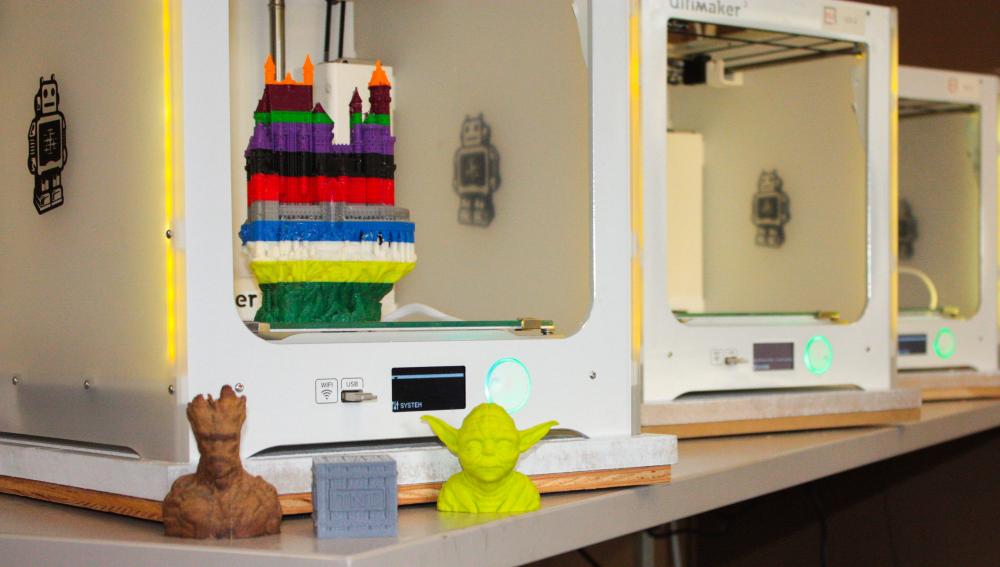Printing with Us
Access and Safety
3D printing is done by our staff. Submit a 3D print request with your files in STL or OBJ format, the ideal color if you have one, the preferred material if you have one, and if it's a mechanical CAD design, a reference dimension to ensure it's scaled correctly. Our staff will work with you to ensure your design is printable, get you a quote (if applicable), and get back to you with answers to any questions you might have about 3d printing. We'll let you know when your part is ready, or you can call or send a follow-up email to verify the status.
Purchasing Materials
We offer various different colors/types of material, and you will only pay for what you use for your project. As a general rule, we do not allow the use of outside filament or materials for our printer, largely due to the safety concern of a high-temperature heater potentially vaporizing something unsafe within a printer and endangering all staff and patrons in the vicinity. Below is the cost structure of our current printing pricing.
3D Printing Rates
| Markforged Mark Two | ($ / cm3) |
|---|---|
| Base Plastic | |
| Onyx | $0.30 |
| SLA / "Resin" Printing (Formlabs) | ($ / mL) |
|---|---|
| Clear, Black, Grey, White | $0.19 |
| Tough, Durable | $0.22 |
| Elastic, Flexible, High Temp | $0.55 |
| FDM / "Traditional" 3D Printing | ($ / gram) |
|---|---|
| PLA | $0.04 |
| PETG | $0.05 |
| PVA (Dissolvable Support) | $0.12 |
| TPU (Semi-Flexible) | $0.09 |
FAQs
Pretty much anything. 3D printing is used to prototype projects, replacement parts for equipment (we 3D print replacement parts for our 3D printers!), useful organizational items, toys, medical equipment/prosthetics. It's really only limited to your design capabilities (or someone else's if you download a file) and the printers size capability. Thingiverse has some really cool files created by others if you want to get ideas.
Any software that allows the user to save a 3D object in the STL format is suitable. For a more comprised list please visit the Resource page here.
3D Printing is a method of additive manufacturing that utilizes various methods of depositing material layer by layer to "print" an object. Objects are constructed from 3D Models produced from Computer Aided Design (CAD) software or from 3D Scans of objects in the real world. Computer Aided Manufacturing (CAM) software converts the 3D model into a set of instructions that control the 3D printer to print the object. GCode is the name of the programming language that the instructions are written in for most 3D printers. CAM software for 3D printers is referred to by the general term Slicing Software or Slicers, after the first widely available open source program, Slic3r. The term is also descriptive of what slicing software does, which is to create slices of the 3D model so that it can be printed layer by layer.
We primarily use PLA, PETG, NinjaFlex, Nylon, Photopolymer resin, and Onyx (a mixture of Nylon and Carbon Fiber). If the material isn't listed in our above list, it's unlikely to be printable on our printers, but we may be able to order it in special use cases. Please reach out to us to ask.
